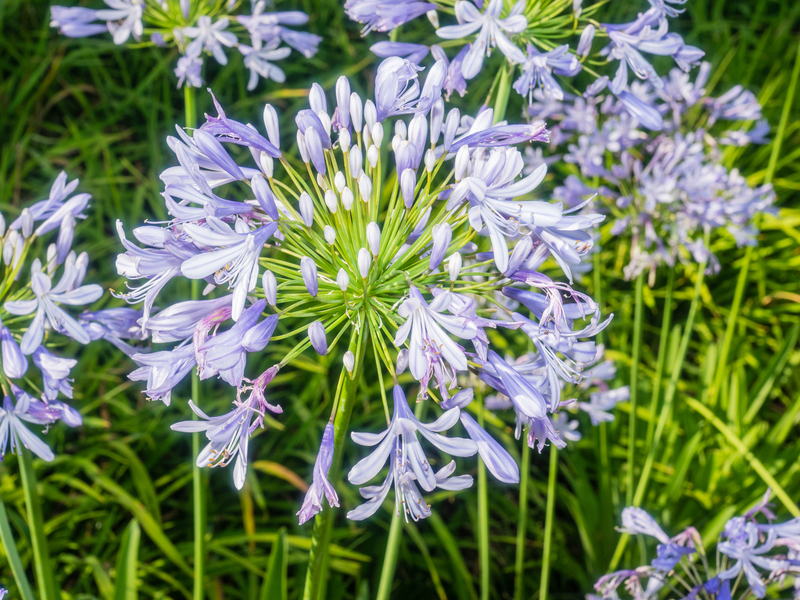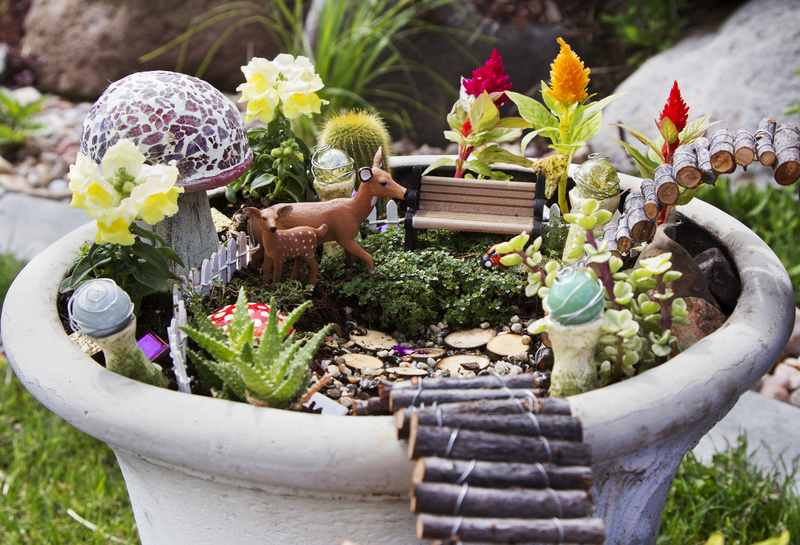Planning a Garden That Encourages Play and Exploration
Posted on 28/08/2025
Planning a Garden That Encourages Play and Exploration
Creating a garden is far more than growing beautiful plants or cultivating vegetables--it's about crafting an experience, especially for children. Imagine a space where kids learn through interactive outdoor play, develop a love for nature, and unleash their creativity freely. Whether you have a sprawling backyard or a compact urban space, planning a garden that inspires exploration and play is one of the most rewarding ways to make the outdoors inviting for all ages.
Why Design a Playful, Exploratory Garden?
- Developmental Benefits: Outdoor play gardens boost physical coordination, cognitive skills, and emotional well-being.
- Fostering Curiosity: Gardens that embrace exploration spark curiosity and a lifelong appreciation for the environment.
- Encouraging Family Togetherness: These gardens become gathering places where families create cherished memories.
Before you begin, it's essential to identify the specific garden features that promote play and discovery. Intentional design, rather than simply scattering toys, enables sustained interest and immersive engagement.

Step-By-Step Guide to Planning a Garden for Play and Learning
1. Understand Who Will Use the Garden
Start by considering age and interests.
- Toddlers: Need safe spaces to crawl, investigate textures, and splash in water.
- Older Children: Thrive on adventure, climbing, or building dens and forts.
- Teens: Might enjoy secluded areas for reading, socializing, or creative pursuits like painting.
- Adults: Value relaxing spots or productive areas for gardening.
Tip: Involve future users in the planning phase to gather ideas and ensure a personalized result!
2. Assess and Map Your Space
Take stock of the location, sunlight, existing plants, and topography.
- Mark out shady and sunny areas, slopes, and any hazards (thorny bushes, ponds, hard surfaces).
- Sketch a layout, dividing the garden into zones for play, exploration, planting, and relaxation.
3. Incorporate Essential Garden Play Features
Your exploratory garden should feature elements that invite interactive play, learning, and nature discovery:
- Paths for Wandering: Winding paths, stepping stones, or secret trails encourage exploration.
- Sensory Stations: Integrate textures, sounds, smells, and colors (herbs, chimes, tactile surfaces).
- Climbing and Balancing Structures: Include logs, boulders, or safe low climbing trees.
- Hidden or Secluded Corners: Plant dens, willow tunnels, or small nooks enhance imaginative play.
- Digging and Construction Areas: Sandpits, mud kitchens, or loose parts for building allow creativity.
- Moveable Features: Log slices, pots, and crates inspire open-ended play and construction.
- Water Play: Shallow ponds, hand pumps, or splash zones provide sensory and STEM opportunities.
- Living Structures: Vine teepees, sunflower houses, or living willow domes create magical hideouts.
Remember: Every addition should be safe, durable, and age-appropriate for its users.
Choosing Plants to Spark Curiosity and Play
The right plant choices will transform a simple garden into an outdoor classroom. Select a diverse mix of plants that engage all the senses and invite hands-on connection:
- Fragrant herbs: Lavender, mint, rosemary, lemon balm (smell and taste exploration).
- Edible berries and vegetables: Strawberries, cherry tomatoes, peas, nasturtiums for snacking and learning about food cycles.
- Textures galore: Lamb's ear, grasses, succulents, mosses for tactile discovery.
- Bold blooms: Sunflowers, zinnias, cosmos and marigolds add color and attract pollinators.
- Attract wildlife: Buddleia, echinacea, and native meadow flowers for butterflies and bees; shrubs and birdhouses for feathered friends.
- Fast growers for impact: Beans, gourds, morning glories for living walls or children's playhouse structures.
Choose non-toxic, low allergen plants with different heights and growth habits to create layered, immersive environments. Avoid spiny, toxic, or high-maintenance species, especially if young children are involved.
Ideas for Themed Exploratory Garden Zones
Divide your garden into distinct interactive play zones to encourage exploration and learning:
1. Sensory Garden
- Raised beds or containers at different heights for easy access.
- Paths paved with bark, gravel, or stepping stones.
- Bells, chimes, and windmills to catch the breeze.
- Textured plants for petting, scented blooms for sniffing, and edible herbs for tastings.
2. Discovery & Science Area
- Bug hotels and butterfly feeders.
- Bird baths, feeders, and nesting boxes.
- Compost bins for mini eco-lessons.
- Weather stations (rain gauges, thermometer, wind sock) for little scientists.
3. Adventure and Imagination Space
- Twisty willow tunnels or secret hideouts.
- Large rocks, stumps, and balance beams for physical challenge.
- Enclosed mini-meadows for fairy or dinosaur 'worlds'.
- Chalkboards, outdoor art stations, or storytelling circles.
4. Water Exploration Zone
- Pebble-bottom streams, splash pads, or water walls.
- Barrels or troughs for floating toys or sailing homemade boats.
- Mud kitchens for messy, sensory-rich play.
Safety First: Make Playful Gardens Secure
The best play gardens balance adventurous spirit with careful risk assessment. Here are key safety tips:
- Supervise young children; ensure visibility from house or seating areas.
- Install secure fences and gates around boundaries and any water features.
- Cushion falls with grass, mulch, or rubber tiles around climbing structures.
- Keep paths clear, even, and non-slip.
- Store sharp tools, chemicals, and fertilizers safely out of reach.
- Use only non-toxic plants and avoid allergenic species like poison ivy or stinging nettle.
- Check for and remove dangerous insects or animal nests regularly.
Low-Cost & DIY Ideas for a Playful Garden
Even on a limited budget, your playful exploratory garden can flourish with imagination and resourcefulness:
- Repurpose logs for seating, stepping, or play.
- Salvage pallets to build raised beds or simple forts.
- Use recycled rubber tires for climbers or planters.
- Encourage children to decorate garden art with stones, painted sticks, or handmade wind chimes.
- Sow fast-growing annuals for quick color and natural privacy screens.
Encouraging Year-Round Play and Discovery
Plan for all seasons so your garden remains an inviting place, whatever the weather:
- Include evergreens, winter-flowering shrubs, and bird feeders for cold months.
- Install rain shelters or a pergola for shade and cover.
- Rotate movable play items and introduce seasonal activities (winter den-building, summer water games, autumn leaf art).

Gardening With Sustainability and Wildlife in Mind
Designing a garden that encourages play and nature exploration doubles as an opportunity to teach children about stewardship:
- Create log piles or stone heaps for beetles and other beneficial bugs.
- Leave wild corners, long grass, or native wildflowers for insects and birds.
- Grow plants that provide food and habitat for wildlife--think berry bushes and nectar-rich perennials.
- Compost garden waste and teach kids about recycling and earth-friendly practices.
A sustainable garden not only supports the local ecosystem but further expands the play and learning opportunities for children.
Tips for Involving Kids in Garden Planning and Upkeep
Ownership encourages engagement and learning. When children help in planning, planting, and maintaining their garden, the positive effects multiply:
- Let them choose seeds to plant or design their own mini-plots.
- Assign age-appropriate tasks like watering, weeding, or harvesting.
- Include fun challenges such as "who can spot the most bugs?" or "tallest sunflower contest".
- Make ongoing garden journaling or sketching part of the routine.
Conclusion: Reap the Rewards of a Playful, Exploratory Garden
Planning a garden that encourages play and exploration is a gratifying project, yielding benefits for children, adults, and nature. Such spaces lay the groundwork for physical development, curiosity, social skills, and environmental respect. Every garden--no matter the size--can become a magical playground and outdoor classroom.
Begin by observing your space, gathering playful inspirations, and working together to shape a garden full of adventure and discovery. You'll cherish the transformation not just in your landscape, but in the lively, learning-filled days that follow.
Key Takeaways:
- Understand your garden's users--plan for all ages and abilities.
- Integrate interactive features--paths, sensory plants, climbing and creative play zones.
- Prioritize safety with thoughtful design and supervision.
- Opt for sustainable gardening--benefitting both people and wildlife.
- Involve children in each stage, from design to daily care.
Let your outdoor space become a sanctuary for discovery, laughter, and lifelong appreciation of the natural world!



